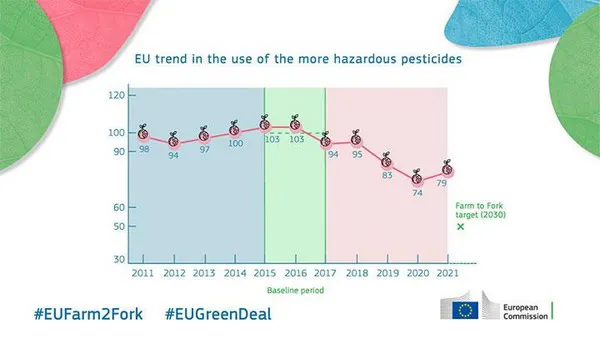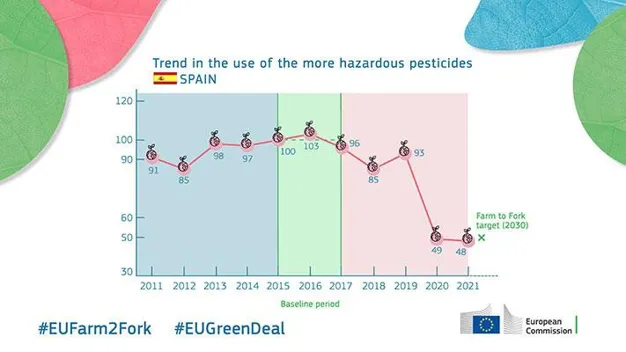On July 5, 2023, the European Commission published the latest data on the progress made in the European Union towards the pesticide reduction targets set in the Farm to Fork strategy for the period 2011-2021.
The data reveal a 6% reduction in the use of chemical phytosanitary products since 2020 and an overall decrease of 33% since the 2015-2017 period.

Regarding the use of more hazardous pesticides in the EU, while there has been an increase of 5% from 2020 to 2021, it is important to highlight that there has still been an overall decrease of 21% since the 2015-2017 period.

However, there are significant differences between each Member State. Based on the information provided by the Commission for each country, by 2021, Spain would have already achieved and even exceeded the "Farm to Fork" strategy target of reducing the use of the most hazardous pesticides by 50%, reducing it by 52% compared to the reference period.

"The overall downward trends recorded in the first 4 years show that both "Farm to Fork" targets are achievable by 2030. Member States are encouraged to continue to ensure that chemical pesticides are only used as a last resort, both in non-agricultural and in farm environments, as foreseen in the Farm-to-Fork strategy. By consistently implementing the principles of integrated pest management (IPM), producers can reduce their dependence on chemical pesticides without jeopardizing the profitability of their businesses," said the Commission in its report.
You can take a closer look at the trends in pesticide use and risks for each member state (except for the Netherlands, for which data are not yet available) here.
